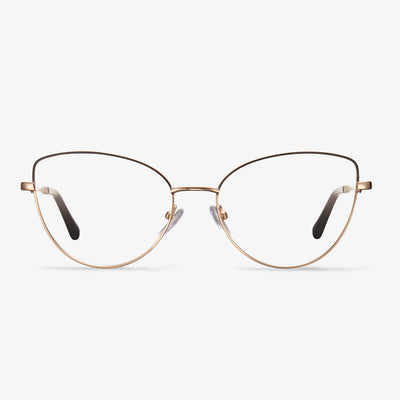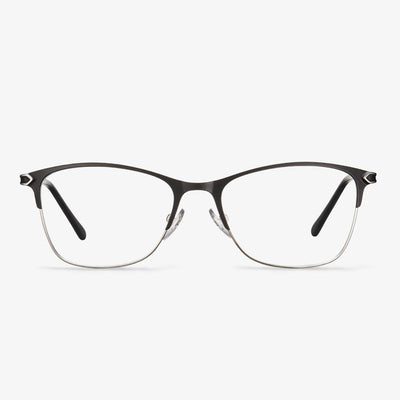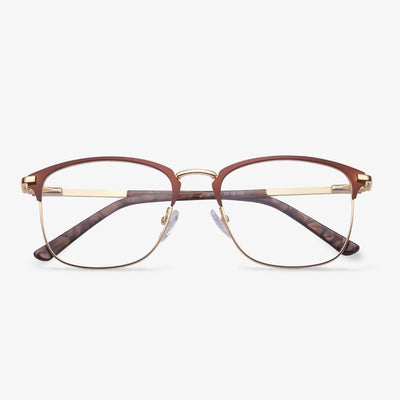What is the best lens material?
Crown glass was first used to make lenses. The glass melt was blown into a crown, or hollow sphere, and then reheated in the center of a rapidly rotating plate, which was then unrolled and flattened by centrifugal force. Flat and thin edges are cut into suitable shapes to make window panes. The circular bulge in the middle is the prototype of the lens. The glass material used to make lenses was originally colorless transparent glass with a refractive index of 1.523. Other substances were added to the lens to improve its ability to absorb ultraviolet light.
Titanium glasses are very popular.
Nowadays, the relatively popular titanium glasses, taken from titanium metal light, are not easy to break, are elastic, have super corrosion resistance, have a good touch, are non-allergic, and have memory characteristics. They have become a new type of glasses frame material. So that the wearer will no longer wear traditional overweight glasses, with no long-term pressure on the bridge of the nose caused by muscle oppression, and another discomfort. And they do not have to worry about glasses after long-term use of discoloration and lackluster and other problems. The titanium frame is more and more popular and becoming a fashion. Especially the high-end business elites praise pure titanium frame. No matter from the material, lens frame, suitable crowd, they can say to be an especially good choice!
The anti-reflection principle of the anti-reflection film
Anti-reflection Coating, known as anti-reflection membrane, is called anti-reflection coating in English, or AR membrane for short. The basis of anti-reflection is the wave and interference of light. The principle is: Two light waves with the same amplitude and the same wavelength are superimposed, then the light wave amplitude is enhanced. The two wavelengths and amplitudes are the same, but the superposition of wavelengths with different wave paths (similar to dislocation) cancels each other out. Therefore, the anti-reflection film plated on the surface of the lens uses this principle to make the reflected light generated by the front and rear surfaces of the film layer interfere with each other, thus canceling each other and achieving the effect of reducing reflection.
What Are Progressive Lenses?
Progressive lenses also called multifocal lenses, have three prescriptions in one pair of glasses, which allows you to see near, middle-distance, and far objects without changing your glasses.
The traditional glasses have telltale lines in the lenses, while the progressive lenses are an update on bifocal and trifocal lenses. Progressive lenses have a seamless look. Sometimes, they are called no-line bifocals. The more accurate name is no-line trifocals.
Progressive lenses are typically designed for people over 40 years old who are both nearsighted and farsighted. With the progressive lenses, there is no need for you to change the nearsightedness eyeglasses and the farsightedness eyeglasses constantly.
Orthokeratology lens
Orthokeratology lenses appeared in the United States in the 1960s and became mature in the 1980s. In 1996, Taiwan first imported the product, and it entered mainland China the following year. It is called OK lens for short because of its pronunciation. After OK lens entered China, it was immediately found by businessmen. A lot of institutions and individuals who do not have the relevant qualifications have flooded into the operation of the OK lens. On July 5, 2001, the State Food and Drug Administration formulated the Regulations on the Supervision and Administration of the Operation, Inspection and Matching of Orthokeratology Lens, which regulated the operating institutions and testing and matching institutions of Orthokeratology lenses. But in China, the rule did not change the course of events.
Kirkland Signature™ HD Digital Progressive Lenses
They use the latest lens manufacturing technology to provide high-definition vision at any distance. Giving you sharper vision in all conditions, all lenses have anti-reflection treatment, and they have superior scratch resistance and superior quality. The lenses help provide a greater reading area and less distortion than standard lenses. And they give each lens a cosmetically attractive appearance.
What is the best lens material?
The world's first resin lens was made of CR-39 material, and CR-39 is still the main optical lens material in Europe and the United States. After the end of World War II, people found that compared with glass, the main lens material at that time, the light transmittance of CR-39 is high, and it can block ultraviolet light. In addition, CR-39 can be dyed, not easy to fog, and has small dispersion (CR-39's Abbe number is 58) and other benefits.


















































